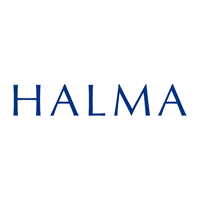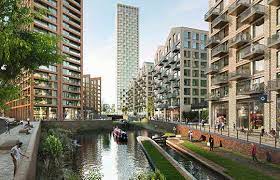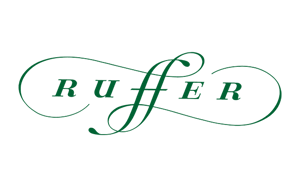Halma plc (LON: HLMA), the global group of life-saving technology companies focused on growing a safer, cleaner and healthier future, today announced its full year results for the 12 months to 31 March 2019.
| Highlights |
| Change | 2019 | 2018 | |
| Continuing Operations | |||
| Revenue | +13% | £1,210.9m | £1,076.2m |
| Adjusted Profit before Taxation1,3 | +15% | £245.7m | £213.7m |
| Adjusted Earnings per Share2,3 | +17% | 52.74p | 45.26p |
| Statutory Profit before Taxation | +20% | £206.7m | £171.9m |
| Statutory Earnings per Share | +10% | 44.78p | 40.69p |
| Total Dividend per Share4 | +7% | 15.71p | 14.68p |
| Return on Sales5 | 20.3% | 19.9% | |
| Return on Total Invested Capital3 | 16.1% | 15.2% | |
| Net Debt | £181.7m | £220.3m | |
· Strong growth with Revenue up 13%, Adjusted1 profit before tax up 15% and statutory profit before tax up 20%.
· Organic constant currency revenue growth3 up 10% for the second consecutive year, and organic constant currency3 Adjusted1 profit before tax growth of 11%.
· All four sectors grew revenue and Adjusted1 profit before tax on an organic constant currency basis3, with three out of four sectors delivering double digit increases.
· Revenue growth in all major regions. Strong performance in the USA and the UK, with good growth in Mainland Europe and a solid performance in Asia Pacific.
· Increased returns, with Return on Sales5 of 20.3% and ROTIC3 of 16.1%. R&D expenditure up 11%, representing 5.2% of revenue.
· Strong cash generation, with cash conversion of 88%; and a robust balance sheet, supporting sustained investment in organic growth and acquisitions.
· Four acquisitions and two small asset purchases completed during the financial year.
· Proposed final dividend up 7%, the 40th consecutive year of dividend per share increases of 5% or more.
Andrew Williams, Group Chief Executive of Halma plc, commented:
“Halma had a successful year, achieving record revenue and profit, delivering our 40th consecutive year of dividend per share growth of 5% or more and making further increased strategic investment supported by our strong balance sheet. We have a strong purpose, culture and growth strategy focused on niches in a diverse range of markets where demand is supported by resilient long-term growth drivers, offering us both organic and acquisition growth opportunities.
The new financial year has started well, and order intake has continued to be ahead of both revenue and order intake for the comparable period last year. We expect to make good progress in the year ahead.”
Notes:
1 Adjusted to remove the amortisation of acquired intangible assets, acquisition items, significant restructuring costs, profit or loss on disposal of operations and the effect of equalising pension benefits for men and women in the defined benefit pension plans, totalling £39.0m (2018: £41.8m). See note 1 to the Results for details.
2 Adjusted to remove the amortisation of acquired intangible assets, acquisition items, significant restructuring costs, profit or loss on disposal of operations, the effect of equalising pension benefits for men and women in the defined benefit pension plans and the associated taxation thereon. See note 2 to the Results for details.
3 Adjusted1 Profit before Taxation, Adjusted1 Earnings per Share, organic growth rates and Return on Total Invested Capital (ROTIC) are alternative performance measures used by management. See notes 1, 2 and 3 to the Results for details.
4 Total dividend paid and proposed per share
5 Return on Sales is defined as adjusted1 profit before taxation from continuing operations expressed as a percentage of revenue from continuing operations.
Strategic Review
We have achieved record revenue and profit for the 16th consecutive year, and double digit-organic constant currency revenue growth for the second year running. Our strategic investment is wide-ranging, including creating innovative new technology, products and services, extending our international reach, strengthening our talent base, and acquiring strong businesses in, or adjacent to, our existing markets.
Halma’s purpose is to grow a safer, cleaner and healthier future for everyone, every day. Consequently, we address some of the world’s most fundamental needs and challenges: safety at work and in public spaces; a cleaner, more sustainable environment; and improved medical care. These needs are both global and long-term in nature, and they will continue to gain importance as populations increase, urbanise and age, and as regulation continues to tighten. We expect these factors to drive demand for our solutions far into the future.
We have a clear and focused growth strategy of growing and acquiring businesses in niche markets with global reach in our chosen market areas of safety, health and the environment. We also have a simple financial model, with strong organic growth, high returns and cash generation allowing us to continuously increase investment to drive future organic and acquired growth, while providing progressive dividends for shareholders. We set ourselves challenging targets, aspiring to double our earnings every five years, while maintaining modest levels of financial gearing without being reliant on seeking further equity.
Halma’s definitive organisational model and culture have provided a stable foundation for over 40 years. They are becoming increasingly important as Halma continues to grow and expand internationally, and as our businesses constantly evolve and adapt to address changing market needs. I believe it is crucial that we are clear on how our purpose, strategy, organisation and culture interact, and how they continue to be the foundation of our success. A description is set out in the Annual Report and Accounts 2019 and on www.halma.com, so that all our stakeholders can understand how our organisation and culture are at the heart of ensuring that we align our purpose with continued strong performance.
Record revenue and profit with higher returns
Revenue increased by 13% to £1,211m (2018: £1,076m), including 10% organic constant currency revenue growth for the second consecutive year. Adjusted1 profit rose by 15% to £245.7m (2018: £213.7m) including 11% organic constant currency growth. Acquisitions contributed 3% to revenue growth (2% net of disposals) and 3% to adjusted profit growth (4% net of disposals). There was a small benefit to revenue and profit from currency in the full year, with a negative impact in the first half more than offset by a positive effect in the second half. Statutory profit before taxation increased by 20% to £206.7m (2018: £171.9m).
Returns remained at a high level. Return on Sales1 increased to 20.3% (2018: 19.9%), within our target range of 18% – 22%. The post-tax Return on Invested Capital improved to 16.1% (2018: 15.2%), well above our estimated Weighted Average Cost of Capital of 7.9%, with the increase primarily reflecting the strong earnings growth achieved.
Strong cash generation and balance sheet to support future investment
Cash generation was excellent and resulted in net debt reducing to £182m (2018: £220m) after spending £68m on acquisitions and £31m on capital expenditure, as well as paying dividends of £57m to shareholders and £41m of tax.
Gearing (net debt to EBITDA) reduced to 0.63 times from 0.87 times. This is lower than our targeted range of 1-2 times, and therefore our balance sheet has significant capacity to support investment in both organic and acquisitive growth, in line with our strategic objectives.
Final dividend to increase by 7%
The Board is recommending a 7% increase in the final dividend to 9.60p per share (2018: 8.97p per share). The final dividend for 2019 is subject to approval by shareholders at the AGM on 25 July 2019 and is expected to be paid on 14 August 2019 to shareholders on the register at 12 July 2019.
Together with the 6.11p per share interim dividend, this would result in a total dividend for the year of 15.71p (2018: 14.68p), also up 7%, making this the 40th consecutive year of dividend per share growth of 5% or more.
Revenue growth in all major regions
We delivered revenue growth in all major regions, reflecting the sustainable and global growth opportunities offered by safety, environmental and health markets. Our companies are increasingly leveraging our regional hubs, and collaborating with other companies to develop new products and services and to expand internationally.
The USA, Mainland Europe and the UK performed strongly. Our largest region, the USA, achieved the strongest revenue growth of 18%, both on a reported and on an organic constant currency basis. Mainland Europe and the UK grew revenue by 12% and 16% respectively (6% and 11% on an organic constant currency basis).
Asia Pacific growth was slower, at 5%, against a strong performance last year which benefited from some large contracts. In our major markets in the region, China grew 8% following 20% growth last year, and Australasia improved by 16%. We continue to see good growth potential in Asia Pacific, by leveraging our growth hubs in the region, and we continue to strengthen our local management teams.
In the Rest of the World, performance was mixed. Revenue was broadly flat overall, with a challenging second half following good first half growth. In the larger markets, Africa and Brazil delivered good growth, while Near and Middle East and Canada were broadly flat.
Revenue and profit growth in all sectors
Revenue and profit increased in all sectors, with three out of four sectors reporting double digit organic revenue and profit growth.
Process Safety delivered good growth, although reorganisations in our Industrial Access Control and Safe Storage and Transfer businesses, to improve their competitive position and performance, softened profit growth.
Revenue increased 7% to £198m (2018: £185m), while profit grew 5% to £45.5m (2018: £43.3m). Organic constant currency growth for revenue and profit was also 7% and 5% respectively, given a minimal currency effect and no acquisitions in the year. Revenue growth was slower in the second half, primarily due to less favourable conditions in the US energy sector. Return on Sales remained strong at 23.0% (2018: 23.5%), with the decline in the year reflecting the reorganisation costs. R&D spend increased by 10% to £7.0m (2018: £6.3m). The Gas Detection and Industrial Access Control businesses performed strongly, while the performance of Pressure Management was challenged by adverse end market conditions and profit mix, but nonetheless delivered flat revenue. Our Safe Storage and Transfer businesses reported a single-digit decline in revenue during their period of restructuring which included strengthening their leadership and consolidating manufacturing operations.
There was strong organic constant currency growth in the USA supported by a major logistics contract for our Industrial Access Control subsector, despite less favourable energy market conditions. The UK also performed well, with good progress in Gas Detection and Industrial Access Control. There was solid progress in Asia Pacific and Mainland Europe, while other regions declined, including in energy related markets in the Middle East.
Process Safety will continue to invest in broadening its markets and improving its product innovation and leadership. We expect this to make it less sensitive to changes in its largest market, oil and gas, and deliver more consistent growth in the future.
Infrastructure Safety had a very impressive year, with strong organic growth and a significant contribution from acquisitions.
Revenue increased by 17% to £409m (2018: £349m), including 11% organic constant currency growth and a 6% contribution from acquisitions. Profit grew by 21% to £88.9m (2018: £73.3m), which included 16% organic constant currency growth and a 5% contribution from acquisitions. Return on Sales increased to 21.8% (2018: 21.0%). R&D spend increased by 22% to £24.9m (2018: £20.4m). The sector’s strong performance was broadly-based, with all five subsectors performing well.
There was exceptionally strong growth in the USA, partly reflecting a recovery from last year’s weaker performance. The sector’s Fire businesses were key contributors to this improvement. The Africa, Near and Middle East region also performed strongly, and there were good rates of growth in the UK and Mainland Europe. Growth in Asia Pacific was slower. The Other regions, which accounts for around 3% of sector revenue, saw a decline as larger contracts, which contributed to last year’s strong performance, came to an end.
Given the widespread growth, and a full year contribution from this year’s acquisitions, Infrastructure Safety is expected to make good progress in the coming year.
The Environmental & Analysis sector achieved strong organic growth, and also benefited from the acquisition of Mini-Cam in 2018.
Revenue grew by 15% to £299m (2018: £259m) which included organic constant currency growth of 11% and a 3% contribution from acquisitions. Profit increased by 21% to £66.4m (2018: £55.0m) including organic constant currency growth of 13% and a 7% contribution from acquisitions. There was a benefit from currency to both revenue and profit of just under 1%. Return on Sales improved to 22.2% (2018: 21.2%). R&D spend increased by 8% to £19.2m (2018: £17.8m). All three subsectors delivered good revenue and profit growth, with a particularly strong contribution from the Environmental Monitoring subsector, which benefited from double-digit organic growth and the acquisition of Mini-Cam.
There was impressive revenue growth in the UK and also in the USA, the sector’s largest market, which benefited from large Spectroscopy and Photonics projects. Mainland Europe grew well, while Asia Pacific saw more modest growth. Other regions, which account for only 4% of sector revenue, reported a decline.
With continued investment to drive collaboration, technology and the extension of its digital and data management capabilities, the Environmental & Analysis sector is expected to make further progress in the year ahead.
The Medical sector achieved a good performance, with revenue growing in all subsectors and all major geographic regions.
Revenue increased by 8% to £306m (2018: £284m), including 10% organic constant currency growth. Profit grew by 15% to £76.9m (2018: £67.1m), including 13% organic constant currency growth. There was a small benefit to revenue and profit from acquisitions. The disposal of Accudynamics in the year had an adverse effect on revenue but benefited profit. Return on Sales increased to 25.1% (2018: 23.6%). R&D spend declined by 3% to £11.5m (2018: £11.8m) but grew by 2% excluding the effect of the disposal of Accudynamics during the year.
The Diagnostics subsector performed very well, after adjusting for the Accudynamics disposal. The Ophthalmology and Sensor Technology subsectors delivered strong growth, the former through continued international expansion, and the latter from further penetration into their core market of location services in acute care facilities in the USA.
There was a strong revenue performance in the USA, the sector’s largest region, with Mainland Europe and Asia Pacific also delivering good growth. There was solid growth in the UK, with Other regions showing a small decline following a strong increase last year.
The Medical sector is expected to make continued progress in the coming year, through increased penetration into developing markets, further product and service development and continued investment in talent.
Four acquisitions and one disposal completed
Halma’s sector-focused organisational model gives us the scalability to continue acquiring small-to-medium-sized businesses to achieve our strategic growth objectives. We are also able to sell and merge businesses relatively easily should specific market dynamics change. This enables us to continue to grow rapidly without becoming significantly more complex. For example, in 2009, Halma had revenue of £502m from 38 operating companies, while today we have revenue of over £1.2bn from 42 operating companies.
Our core acquisition strategy is to find privately owned businesses operating in niches which are aligned with our purpose of “Growing a safer, cleaner, healthier future for everyone, every day”. We focus the majority of our search efforts on our core, or closely adjacent, market niches although each sector board has the freedom to find new niches which might have the right product, market and financial characteristics. In most cases we acquire 100% of an entity but we also consider minority investments to gain access to potentially valuable intellectual property if an outright purchase is not appropriate or possible. Every transaction is approved by the Group Chief Executive and Chief Financial Officer, with all deals £10m or over requiring Halma plc Board approval.
We entered the year with a healthy acquisition pipeline and this translated into four acquisitions being completed in the Infrastructure Safety sector, as well as two small asset purchases in the Medical sector, for a total initial cash consideration of £66.1m. We made one small disposal in the year, of Accudynamics, as it no longer had the future growth and returns characteristics we require. These acquisitions contributed in line with expectations during the year and we expect good performances from them in the future. Full details are given in the Financial Review and in the notes to the Financial Statements.
I am pleased with the number of acquisitions made during the year and with the high levels of prospecting activity in our sector M&A teams. Although we did not meet our KPI of acquiring profit of 5% or more, delivering 3.2% (excluding the effect of the Accudynamics disposal), this was more than compensated for by strong organic growth. However, increasing the contribution from acquisitions will be a focus for improvement. Consequently, we have increased our capability, with new talent at the Divisional Chief Executive and Managing Director levels and the addition of further resources to our sector M&A teams. We have also added expertise to support minority investments that can bring new capabilities to Halma without taking 100% ownership. We continue to build long-term relationships with business owners so that they see Halma as the right home for their business when they decide to sell, or as a strong investment partner to help them grow their businesses, and have a good pipeline for the year ahead.
Further investment in our Growth Enablers
Our Growth Enablers are resources available to our companies to help them to grow. Our strong progress in the year was supported by their further development, for example in the expansion of the resources in our M&A teams, as discussed above, and the strengthening of the leadership teams in our international hubs. We also increased our Innovation and Digital programmes, and set out a new vision for how Finance & Risk can enable our companies to grow. Our Strategic Communications team has been active in supporting our companies in telling their story, thereby better connecting them with their customers.
This month we are launching a new brand design and website to better communicate the Halma story to our stakeholders, particularly how we are accomplishing our purpose through our unique culture.
Talent and culture are critical components of every business’ success. The change we made at the end of 2017 to streamline our Executive Board, reducing the number of Sector Chief Executive roles from four to two, has been a great success. It has re-established the importance of the Divisional Chief Executive (DCE) role, reduced complexity, shortened lines of communication, improved decision-making and eased networking across Halma. This has enabled us to attract stronger talent with greater autonomy and responsibility. Our DCEs now play a more significant leadership role in Halma with increased interaction with the Executive Board.
Good progress on executing our strategy
It is over a year since we launched our Halma 4.0 strategy, which provided our companies with a clear strategic framework including how to address the diverse challenges and opportunities presented by the digital age. We have made good progress in developing our digital growth strategies, although their current contribution to revenue growth is modest. We expect them to play a more significant role in the future.
We have three elements to our growth strategy:
- Core growth, for example, through new product development or the international expansion of existing companies, remains our main focus. We have continued to increase investment to support it, with R&D spend up by 11% to £63m (2018: £57m).
- Convergence growth helps Halma companies to unlock value by creating new solutions, and often new business models, by combining the capabilities and technologies of more than one Halma company, or by a Halma company doing the same through an external partnership. During the year, nine projects involving over 20 Halma companies went through our Convergence Accelerator programme and the commercialisation of some of them will continue in the coming year.
- Edge growth is created from new digital business opportunities via partnerships with external companies which have many leading-edge capabilities that we do not wish to acquire. We have been very active in building these partnerships, with discussions initiated by companies across all our sectors from a number of events in Singapore and Israel (the latter in collaboration with OurCrowd, an equity crowdfunding platform). We have also launched a collaboration with Hitatchi to help us to scale and execute some of our digital business ideas, with two Halma companies already participating and further projects being planned.
We will continue to refine our digital strategy and policies to create a robust framework for our digital growth. This will include how we will organise and share data, define its ownership and comply with regulatory requirements with a structured and systematic approach.
We are developing key performance indicators to track our Innovation & Digital progress and will report on these in the coming year.
Outlook
Halma had a successful year, achieving record revenue and profit, delivering our 40th consecutive year of dividend per share growth of 5% or more and making further increased strategic investment supported by our strong balance sheet. We have a strong purpose, culture and growth strategy focused on niches in a diverse range of markets where demand is supported by resilient long-term growth drivers, offering us both organic and acquisition growth opportunities.
The new financial year has started well, and order intake has continued to be ahead of both revenue and order intake for the comparable period last year. We expect to make good progress in the year ahead.
Andrew Williams
Group Chief Executive







































